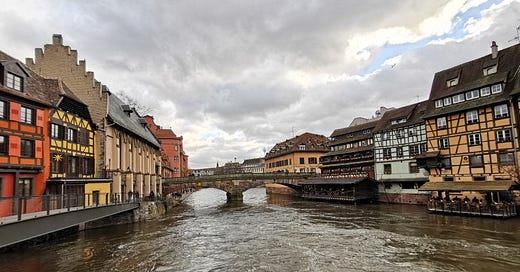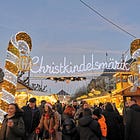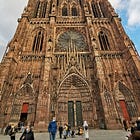Dreaming Of France: Strasbourg
A final tour through one of our favorite spots in France.
By now, dear reader, you may have had enough Strasbourg from me. But we do love it and both of our visits have been wonderful. For now, this is the final overview. You can see the previous articles here:
Onward…
Strasbourg is the capital city of the Grand Est region, formerly Alsace, in northeastern France. Nestled along the Rhine River, it is also the f…
Keep reading with a 7-day free trial
Subscribe to French Crossroads to keep reading this post and get 7 days of free access to the full post archives.






